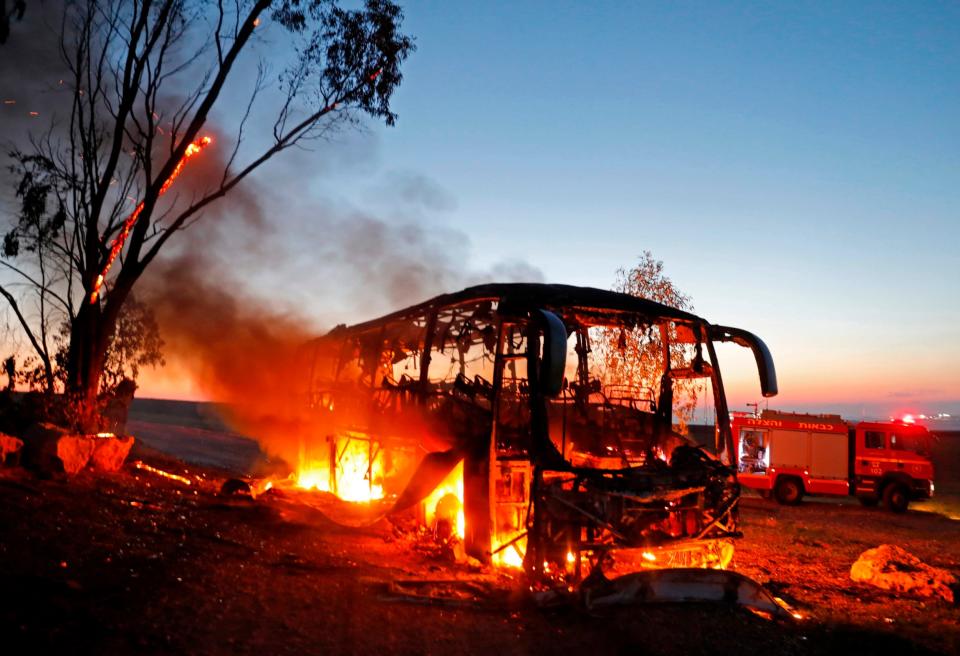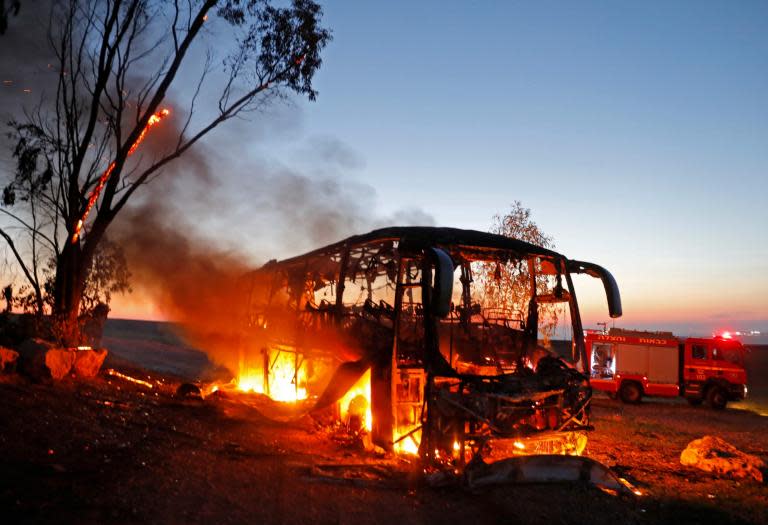Israel’s latest strikes on Gaza were deliberate attempts to prolong the suffering of Palestinians – and the world has fallen for it
As Gaza prepared yesterday for another night of shelling by Israeli jets and gunships, and as Hamas threatened to fire off more rockets into Israel, nobody dared guess in what appalling bloodbath this latest flare-up between Israel and Gaza would end.
One thing, however, was already clear: Israel would be credited with breaking the ceasefire, not Hamas.
Justifying its previous onslaughts on Gaza, Israel has presented a narrative in which Hamas provoked the conflagration. Even after the 2014 war, when more than 2200 Palestinians were killed, compared with seven Israelis, Israel presented Israel as the victims; Hamas had provoked the onslaught, it alleged, and was therefore solely responsible for the results.
On this occasion however the narrative is very hard to spin. On Sunday, Benjamin Netanyahu, the Israeli prime minister, told his cabinet he was “doing everything I can in order to avoid an unnecessary war” and a truce easing tensions appeared to be in place, brokered by Egypt.
The following day, Israeli commandos launched a highly provocative incursion into Gaza aiming to kill or – more likely – to kidnap a commander of al-Qassem, Hamas’s military wing. Gaza sources believe the Israelis hoped to force the kidnapped man into providing key intelligence, probably about tunnels, but also about the whereabouts of two Israeli soldiers, believed killed by Hamas during the 2014 war and held in Gaza ever since.
But the operation went badly wrong, leaving seven Palestinians fighters killed by Israeli gunfire, including the targeted Qassem man, and one Israeli soldier also killed. The commandos fled back across the border, Hamas rockets ensued, and Israeli jets soon filled the skies.
That the Israeli mission was botched is clear. Palestinians say the Israelis, disguised as Arab women, were easily spotted outside a mosque. Botched or not, however, the timing of such a kidnap or murder attempt, just as the fledgling ceasefire was being finalised, suggests it must have been calculated to shatter any trust there was; Israel knew their mission deep into Gaza would wreck the truce deal, which we can only assume was part of their intention all along.
After all, the truce was in danger of characterising Hamas as possible dealmakers – even as terrorists that are worth talking to perhaps. Weakened after 11 years of siege, Hamas were prepared to show reason, and make concessions in return for cash and fuel to the starved strip.
But for the government of Netanyahu, the idea of Hamas being viewed as in any way reasonable – or at least able to show reason – is anathema. Hamas is the enemy, seeking to destroy Israel and will not change. It is only by maintaining this narrative that Netanyahu can justify the ongoing siege of Gaza, the sniper shootings of border protesters and the periodic bombardment, which is arguably the biggest demonstration of collective punishment on the planet.
Ever since 1948 when the state of Israel was created as 750,000 Palestinians fled their homes, 220,000 to Gaza, it has been as important for Israel to win the narrative war as the military war. A central thread of the Israeli narrative always paints the Israelis as sole victims. The suffering of the Palestinians is entirely their own fault. They chose to flee in 1948 – so the Israeli version goes – so they should not be allowed to return to their land.
Today, no matter that the imprisonment of 2 million Palestinians in Gaza – 1.4 million of them refugees or descendants of those refugees who fled their homes in 1948 – is illegal under every paragraph of international law, including the Geneva Conventions; it is their own fault that they are penned in, stateless and impoverished, because 11 years ago they voted for Hamas.
So successfully has this version of the story been told inside Israel itself that the majority of Israelis today believe that most of people in Gaza are simply “terrorists” who have no claim to any land, and have already been generously granted independence by Israel, living willingly under Hamas rule behind the Gaza wall.
The fact that Palestinians voted for Hamas’s style of resistance out of desperation, after years of failed peace initiatives and of Israeli occupation, is written out of the tale, and so is the fact that most of the Gaza Palestinians would vote Hamas out if only they had a chance.
Most disturbing, however, is how ready the outside world has always been to buy into this version of events. Holding up the bogeymen of Hamas as the sole rationale for Gaza’s cruel collective punishment has either blinded western governments from the cruelty and injustices going on behind Gaza’s walls and fences, or – more likely – given them an excuse they need for side-stepping the intractable problem.
Speaking to western diplomats recently about what plans they had for a new peace initiative, I received only blank looks.
When human rights groups report on the causes of the 2018 “war”, they must at least declare that Israel started it by wrecking the truce. But Israel will try to write the rest of the narrative, saying Hamas was to blame for the horrors that came next. What these horrors will be, we will soon find out.

 Yahoo News
Yahoo News 

